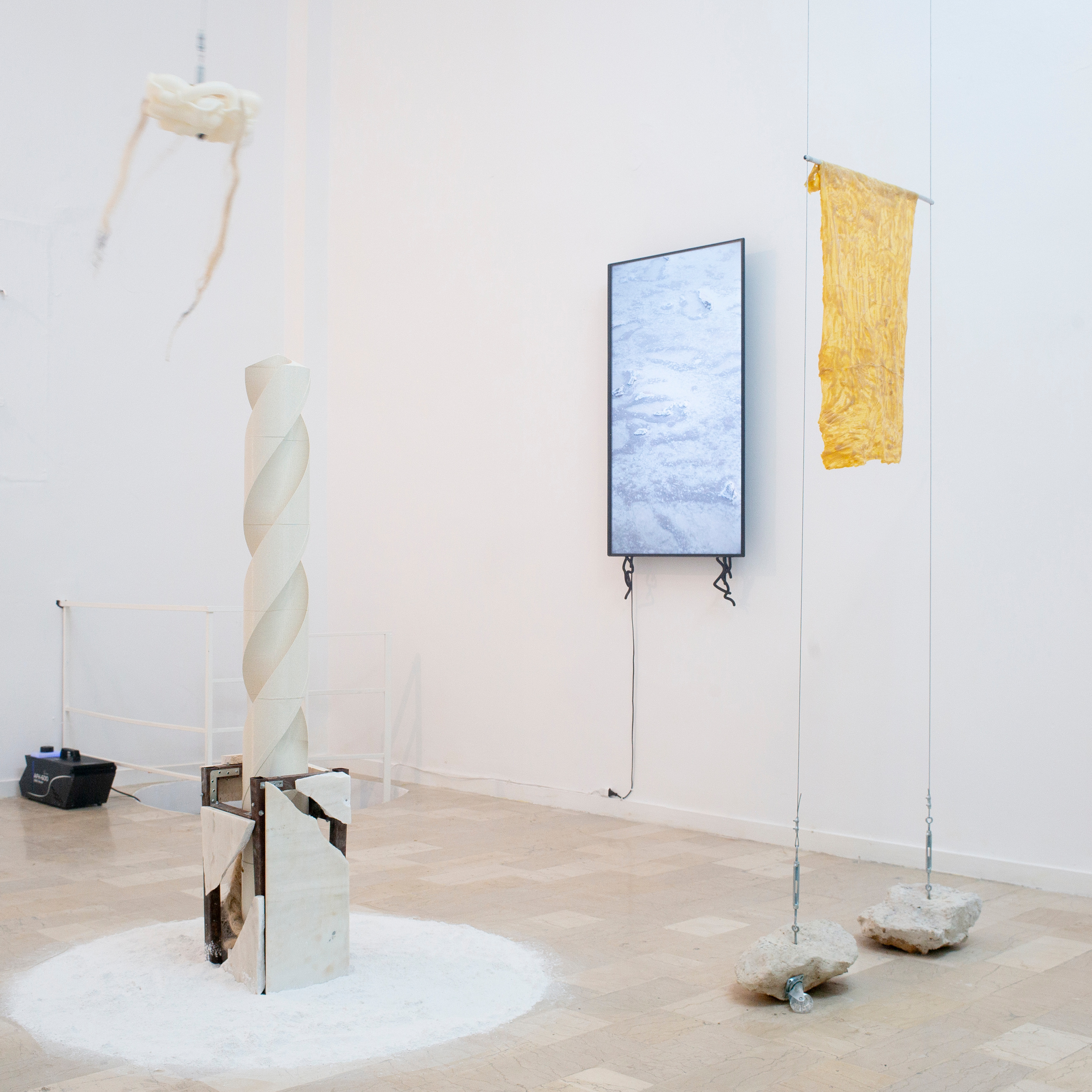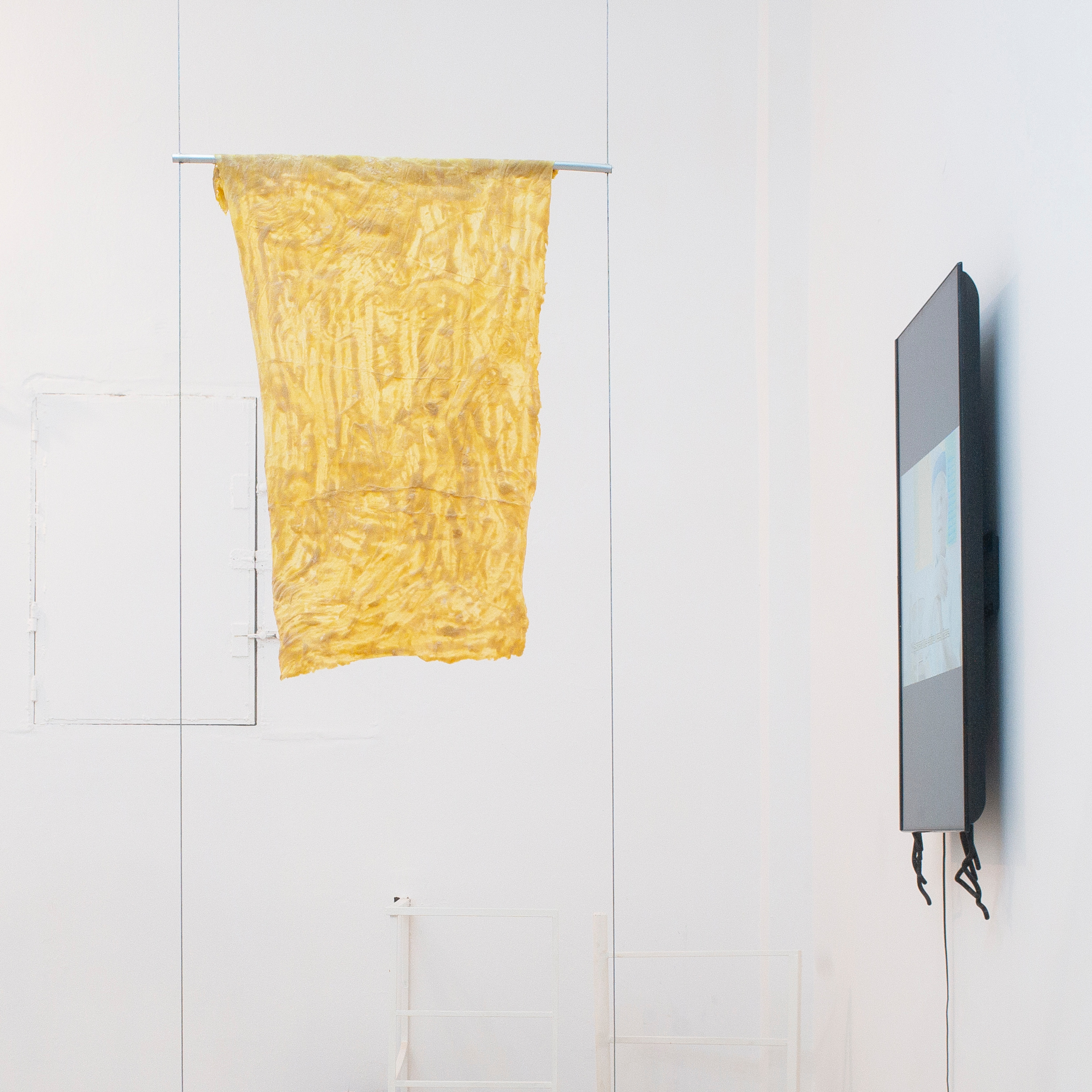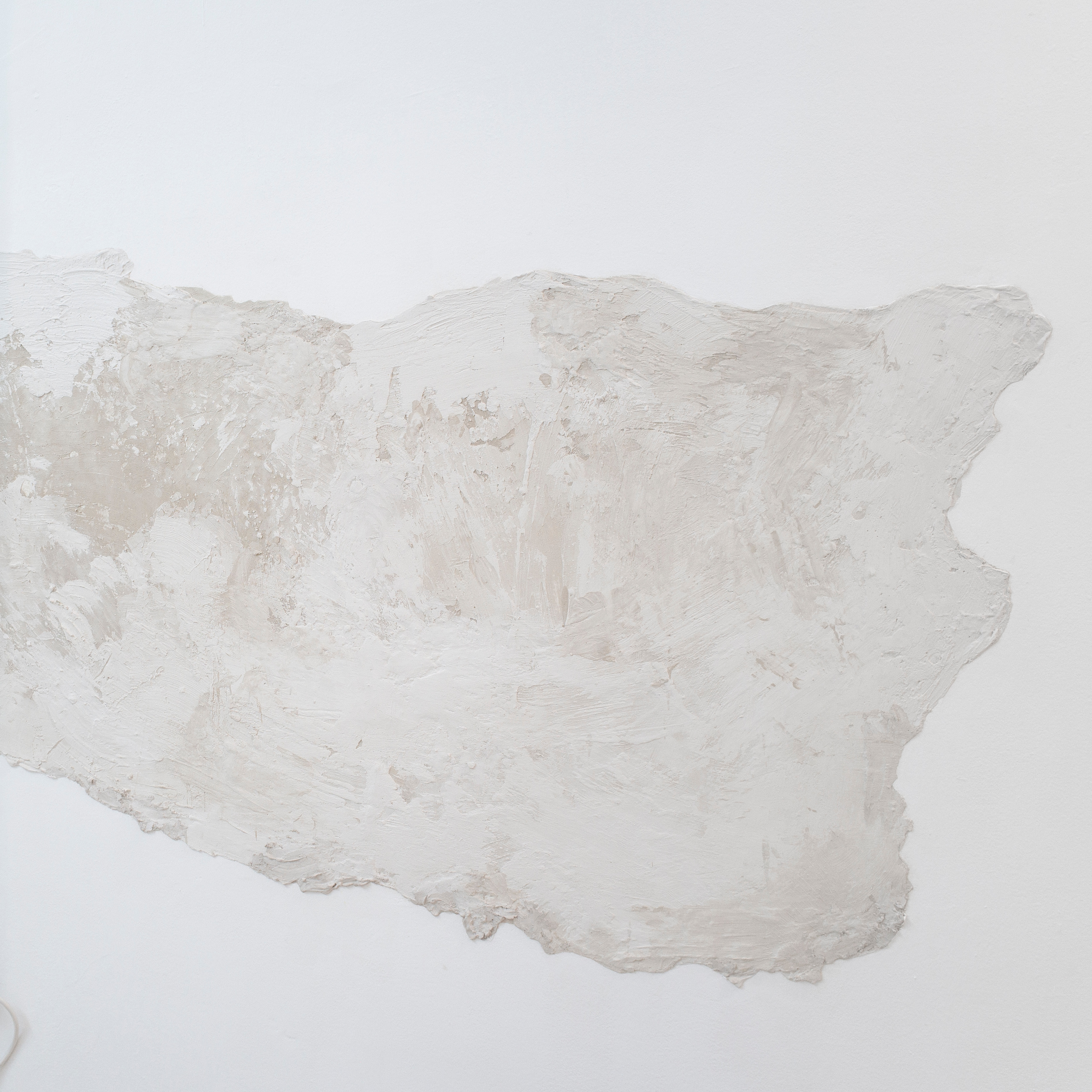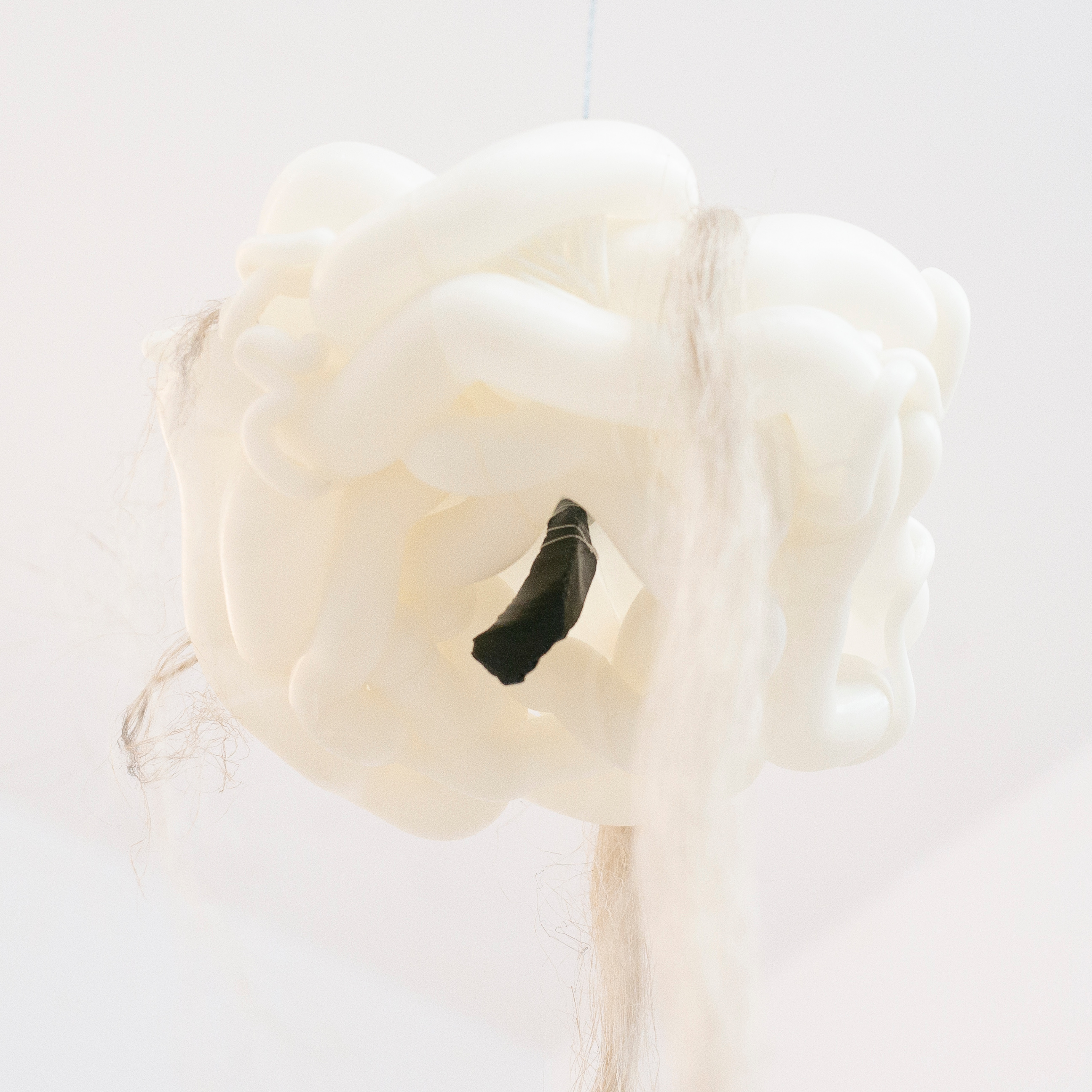The Tunnels do not Echo — Iza Koczanowska
20.09 — 27.10

The Tunnels Do Not Echo
‘Men will only start to see something when there will be nothing left to see’.
Alphonse Daudet
*Therapeutic incubation (enkoimesis) was a multifaceted religious phenomenon in Ancient Greece and a widespread practice based upon a deliberate act of sleeping and dreaming in sanctuaries dedicated to the god Asklepio - the father of the goddess Hygiene (Health).
(From Architecture of Healing, Milina Ivic).
Asklepia were ancient Greek healing temples dedicated to Asclepius, where people sought both spiritual and physical healing through rituals. A sanatorium is a modern medical facility for long-term treatment and rehabilitation of chronic illnesses. Both aimed at healing, but Asklepia focused on spiritual methods, while sanatoriums rely on scientific care.
Inside the speculative space, the simulation of mourning is explored with post-primitive procedures. It reconstructs elements from Asklepia within the context of scarcity after material extraction and environmental illness. The remaining traces of minerals become the focal point of incubations, while exploring the pursuit of health amid ecological collapse. Hygieia, or Ὑγιεία, the Greek goddess of cleanliness and hygiene, envisages a world in which resources are depleted and solastalgia treatment centres — sanatoriums — rise from the ashes of former pits, clinging to the remnants of once-rich deposits.
The transformed bodies of nature, amongst a narrative of rituals, are juxtaposed with the final traces of minerals, embodying a commentary on environmental degradation and the desperate reclamation of what remains. The proposed space, set somewhere between speculation and dream, prompts questions around cyclical nature and reflects on the ethics of leisure and tourism in conditions of extreme earth extraction. Inherent in this landscape is the impact on worker’s bodies and the enduring quest for wellness amidst ecological collapse.
The bodies of workers morph into mineral; echoing collective quasi-documental memory of extraction blended with archival interviews with miners, ancient rituals, and speculative future narratives. During the conversation, the mineral shares knowledge and weaves it into answers to the interviewee’s questions. As a result, visitors receive an intimate conversation — quasi-therapy between themselves and the representation of the built world.
~~~
Iza Koczanowska (born 1988) is an interdisciplinary artist and interior architect whose work bridges photographic performance, video, and installation across both physical and digital spaces.
Research plays a pivotal role in her work, holding equal importance to an empirical approach that often delves into the uncomfortable. Her practice combines speculative realities with documentary elements and personal experience. She is particularly interested in social ecology and the defense mechanisms we create to cope with the dysfunctions of capitalism and the existential threats posed by climate shifts and social inequalities.
Photos by Frank Holbein
~A thousand thank you’s to Nikoletta Georgakopoulou, Niklas Feinik and Lukasz
‘Men will only start to see something when there will be nothing left to see’.
Alphonse Daudet
*Therapeutic incubation (enkoimesis) was a multifaceted religious phenomenon in Ancient Greece and a widespread practice based upon a deliberate act of sleeping and dreaming in sanctuaries dedicated to the god Asklepio - the father of the goddess Hygiene (Health).
(From Architecture of Healing, Milina Ivic).
Asklepia were ancient Greek healing temples dedicated to Asclepius, where people sought both spiritual and physical healing through rituals. A sanatorium is a modern medical facility for long-term treatment and rehabilitation of chronic illnesses. Both aimed at healing, but Asklepia focused on spiritual methods, while sanatoriums rely on scientific care.
Inside the speculative space, the simulation of mourning is explored with post-primitive procedures. It reconstructs elements from Asklepia within the context of scarcity after material extraction and environmental illness. The remaining traces of minerals become the focal point of incubations, while exploring the pursuit of health amid ecological collapse. Hygieia, or Ὑγιεία, the Greek goddess of cleanliness and hygiene, envisages a world in which resources are depleted and solastalgia treatment centres — sanatoriums — rise from the ashes of former pits, clinging to the remnants of once-rich deposits.
The transformed bodies of nature, amongst a narrative of rituals, are juxtaposed with the final traces of minerals, embodying a commentary on environmental degradation and the desperate reclamation of what remains. The proposed space, set somewhere between speculation and dream, prompts questions around cyclical nature and reflects on the ethics of leisure and tourism in conditions of extreme earth extraction. Inherent in this landscape is the impact on worker’s bodies and the enduring quest for wellness amidst ecological collapse.
The bodies of workers morph into mineral; echoing collective quasi-documental memory of extraction blended with archival interviews with miners, ancient rituals, and speculative future narratives. During the conversation, the mineral shares knowledge and weaves it into answers to the interviewee’s questions. As a result, visitors receive an intimate conversation — quasi-therapy between themselves and the representation of the built world.
~~~
Iza Koczanowska (born 1988) is an interdisciplinary artist and interior architect whose work bridges photographic performance, video, and installation across both physical and digital spaces.
Research plays a pivotal role in her work, holding equal importance to an empirical approach that often delves into the uncomfortable. Her practice combines speculative realities with documentary elements and personal experience. She is particularly interested in social ecology and the defense mechanisms we create to cope with the dysfunctions of capitalism and the existential threats posed by climate shifts and social inequalities.
Photos by Frank Holbein
~A thousand thank you’s to Nikoletta Georgakopoulou, Niklas Feinik and Lukasz









